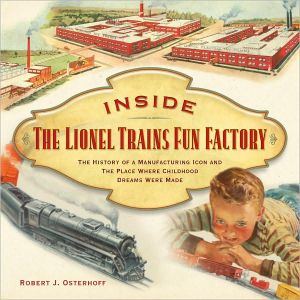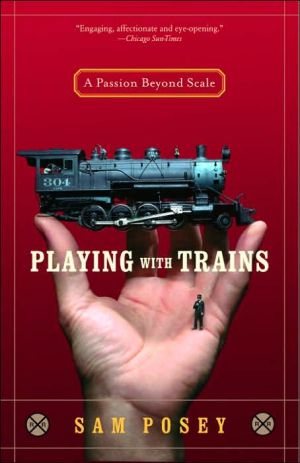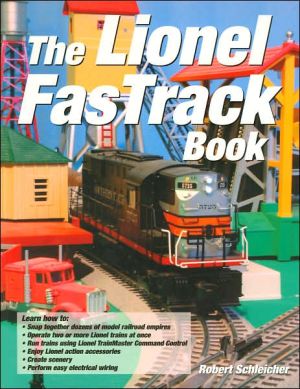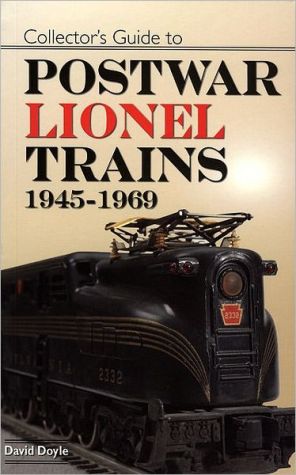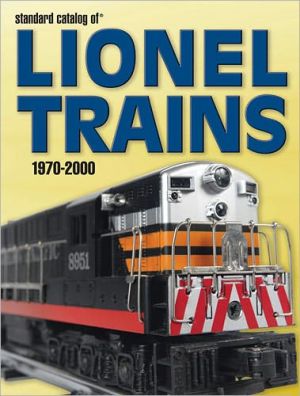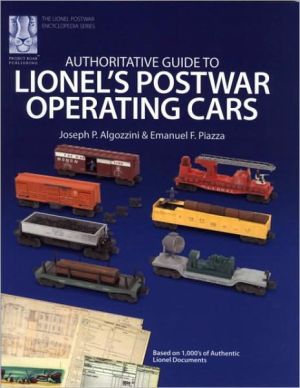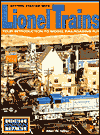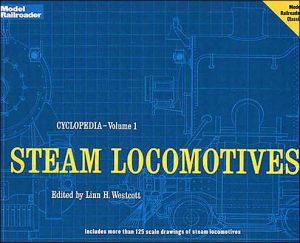Inside the Lionel Trains Fun Factory: The History of a Manufacturing Icon and the Place Where Childhood Dreams Were Made
Do you like Lionel toy trains? Enjoy corporate history? Or just want to take a nostalgic journey back to your childhood?\ \ Then Inside The Lionel Trains Fun Factory: The History of a Manufacturing Icon and The Place Where Childhood Dreams Were Made is for you-delivering a fascinating trip through the rise, fall and rise again of Lionel, one of the manufacturing and pop icons in modern American life. The impeccable research by Lionel historian Robert J. Osterhoff, along with hundreds of...
Search in google:
Do you like Lionel toy trains? Enjoy corporate history? Or just want to take a nostalgic journey back to your childhood?Then Inside The Lionel Trains Fun Factory: The History of a Manufacturing Icon and The Place Where Childhood Dreams Were Made is for you-delivering a fascinating trip through the rise, fall and rise again of Lionel, one of the manufacturing and pop icons in modern American life. The impeccable research by Lionel historian Robert J. Osterhoff, along with hundreds of unpublished photos and images, tells the history of Lionel's trains, factories, employees and business practices from the late 19th century until today.Lawrence Maxted - Library JournalThese two well-illustrated large-format books on the Lionel toy company will appeal to different audiences. Osterhoff (ed., Greenberg's Guide to Lionel Prewar Parts & Instruction Sheets; coauthor, Greenberg's Guide to Lionel Paper and Collectibles) offers a meticulously researched history of the Lionel factories. He covers its early Manhattan workshops, its factory complex in Irvington and Hillside, NJ, and its last U.S.-based manufacturing facility in Michigan. The book's strength is its descriptions of the physical buildings, with hundreds of photos, plans, documents, and other illustrations. Osterhoff spends little time on the trains themselves, and though he covers labor relations and some employee activities, he doesn't focus on what daily life was like in what the company termed the "fun factories." Osterhoff does a nice job explaining Lionel's hard times in the 1960s and its long-standing involvement with military production. This important, though narrowly focused study of the iconic Lionel is recommended for academic and larger public library business collections.Schleicher (The Big Book of Lionel) approaches Lionel through its toys, targeting an audience of armchair hobbyists. He sprinkles in paragraphs on the company's history only to put his discussion of the toys in proper perspective. Sections of a few pages each are devoted to categories such as action log cars, stations, and the 0-scale Hudson locomotive. Though he explains the background of each product category, the real value of the book is the hundreds of recent color photos showing these wonderful trains, buildings, and accessories in their natural state on train layouts.Schleicher's delightful work is a feast for the eyes and provides enough information to make Lionel understandable to a novice. For all public libraries with model railroading collections.
Acknowledgments 4Dedication 5Prologue 6Part I Building the Fun Factories1 Manhattan Job Shops: The Early Years 92 The First Fun Factories 373 A New Beginning in Irvington 534 Expanding Into Hillside 71Part II New Opportunities & Diversification5 The Twisted Sixties 936 Selling The Hillside Factory 1057 Acquired Factories in Transition 113Part III Lionelers & Their Inventiveness8 A Great Place to Work: Or Was It? 1259 Intellectual Capital of the Toy Train Business 14710 How Trains Were Made 16711 In Defense of America: The War Years 191Part IV Toy Train Reprise12 Ruins of a Great Era 21513 Epilogue 229Part V AppendicesA Lionel Factory Departments 231B Timeline of Major Lionel Fun Factories 232C Lionel Patents 236Illustration Credits 239Bibliography 240Index 241
\ Library JournalThese two well-illustrated large-format books on the Lionel toy company will appeal to different audiences. Osterhoff (ed., Greenberg's Guide to Lionel Prewar Parts & Instruction Sheets; coauthor, Greenberg's Guide to Lionel Paper and Collectibles) offers a meticulously researched history of the Lionel factories. He covers its early Manhattan workshops, its factory complex in Irvington and Hillside, NJ, and its last U.S.-based manufacturing facility in Michigan. The book's strength is its descriptions of the physical buildings, with hundreds of photos, plans, documents, and other illustrations. Osterhoff spends little time on the trains themselves, and though he covers labor relations and some employee activities, he doesn't focus on what daily life was like in what the company termed the "fun factories." Osterhoff does a nice job explaining Lionel's hard times in the 1960s and its long-standing involvement with military production. This important, though narrowly focused study of the iconic Lionel is recommended for academic and larger public library business collections.\ Schleicher (The Big Book of Lionel) approaches Lionel through its toys, targeting an audience of armchair hobbyists. He sprinkles in paragraphs on the company's history only to put his discussion of the toys in proper perspective. Sections of a few pages each are devoted to categories such as action log cars, stations, and the 0-scale Hudson locomotive. Though he explains the background of each product category, the real value of the book is the hundreds of recent color photos showing these wonderful trains, buildings, and accessories in their natural state on train layouts.Schleicher's delightful work is a feast for the eyes and provides enough information to make Lionel understandable to a novice. For all public libraries with model railroading collections.\ —Lawrence Maxted\ \ \
